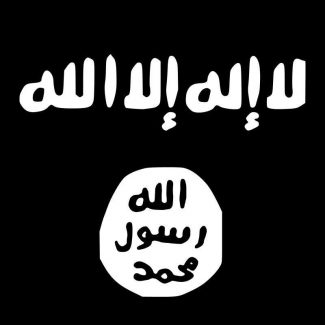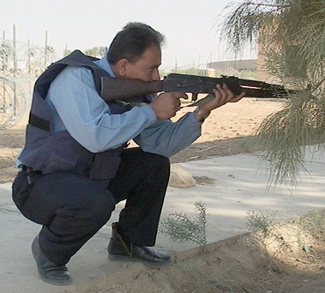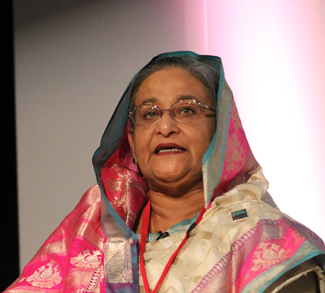“It’s Dhaka’s 26/11,”cried most of the mainstream print media in India, clearly drawing an analogy between the terrorist attack in Dhaka last week and the Mumbai terrorist attack on November 26, 2008.
Last week, six heavily armed men stormed the Holey Artisan Bakery and restaurant in Dhaka, killing 22 persons including 11 Italians, 7 Japanese, 2 Bangladeshis, and 1 Indian. This attack stands unrivalled compared to other attacks in Bangladesh in terms of scale and size. The attack was purportedly orchestrated by Islamic State, and it marks a clear departure from the group’s earlier attacks which were quite rudimentary and less sophisticated in nature. However, Dhaka continues to be in denial, and has dismissed the presence of Islamic State in Bangladesh. Dhaka has strongly denied Islamic State’s role in this latest terrorist attack, claiming that the attack was perpetrated by “homegrown” groups, ruling out operational linkages of this group with the Islamic State.
Dhaka’s assertion has thrown up two different hypothesis, both of which are inter-linked with each other. First, whether the Islamic State is present in Bangladesh and the second, whether Islamic State is linked to this latest attack. However, notwithstanding Dhaka’s denial, ground-level realities appear to indicate both the presence of the Islamic State as well as its links to the latest attack in Bangladesh. And more importantly, in what could be even more worrying for the security planners in Bangladesh, is that the Islamic State is ratcheting up its operations to the next level.
Firstly, this latest terrorist attacks is consistent with the intention of the Islamic State to revive the jihad in Bangladesh by targeting soft targets such as foreigners and individuals. As highlighted by the Geopolitical monitor in an earlier article, Bangladesh appears to be the key pivot for Islamic State’s South Asia operations. This is central to the Islamic State’s propaganda theme in recent times. The Islamic State in its English mouth piece Dabiq (#12 & 14) has come out with a dedicated article focusing on Bangladesh and an interview with Shaykh Abu Ibrahim al-Hanif, the Ameer of the Islamic State in Bangladesh respectively. And clearly coinciding with its first article entitled “The Revival of Jihad in Bengal” which was published in issue no 12 of the Dabiq around September-November 2015, the Islamic State claimed responsibility for at least 16 terrorist attacks including the recent killings of a Hindu priest and a Buddhist monk across Bangladesh since September, 2015.
More particularly, Islamic State has already declared its intention to specifically target citizens of Western countries and countries which support the military action against Islamic State. For instance, Islamic State had earlier declared that it will target Japanese citizens as the Japanese government was part of the international coalition against the Islamic State. Issue no 7 of the Dabiq states: “prior to Abe Shinzo’s thoughtless pledge of support for this crusade, Japan was not on the list of priorities to be targeted by the Islamic State, but through Abe Shinzo’s foolishness, all Japanese citizens and interests – wherever they may be found – are now a target for the soldiers and patrons of the Khilāfah everywhere.”
This attack led to the death of 20 foreigners including 7 Japanese citizens. And more particularly, this latest attack by Islamic State appears to reflect a higher degree of sophistication in planning and execution compared to previous attacks. Earlier attacks which were carried out using machetes, low intensity improvised explosive devices, and small arms were quite rudimentary in nature. The target segment of the attacks were also soft targets such as individuals and commoners consisting of Shia Muslims, Hindus, Christians, liberal thinkers and a handful of foreigners.
However, in direct contrast, the current terrorist attack is unique and first of its kind in Bangladesh, for this is the only instance where heavily armed men took foreigners as hostage. This attack is carefully planned as the target appears to be chosen well, after thorough reconnaissance, factoring the foreign guests frequenting this place. This attack has also provided the Islamic State with a huge propaganda edge, compared to their earlier attacks. For example, in India, mainstream print and electronic media covered this story as their main headlines, even a full two days after the attacks, compared to the fleeting mentions about earlier low-profile incidents such as the hackings and machete attacks. Factoring the nature of the attacks as well as the inordinate publicity accorded, this attack has to be conferred with “high profile attack” status. Such a high profile attack, will not only benefit the Islamic State in increasing its recruitment in Bangladesh but also simultaneously announce to the world of its presence.
Secondly, Dhaka has pinned the blame for this attack on Jama’atul Mujahideen Bangladesh (JMB), an extremist organization which was banned at least a decade ago. The Bangladeshi Home Minister Asaduzzaman Khan, who has dispelled the links of the Islamic State to this attack, has gone on record to state that all the attackers are home grown and belonged to JMB. Again, even going by Dhaka’s assertion that they are home grown, it does not necessarily rule out the possibility of elements in JMB acting at the behest of the Islamic State. For instance, JMB’s Rangpur region’s chief Masud Rana had admitted to being behind the killing of Japanese national Kunio Hoshi in October 2015, which was claimed by the Islamic State.
Incidentally, the Islamic State in its English mouth piece Dabiq has showered praises on JMB as the only organization in Bangladesh which is in alignment with Islamic State’s stated objective of establishing the Shari’a law. Islamic State’s Ameer in Bangladesh, Shaykh Abu Ibrahim al-Hanif has already stated that grassroots followers of JMB and other Islamic groups in Bangladesh are joining the Islamic State in large numbers due to the ideological appeal. This conflation of ideologies has driven members of JMB to switch loyalty towards the Islamic State. However, it is imperative to state that JMB as an organization or its leadership has not openly supported the Islamic State. Hence, Dhaka could be right to some extent in saying that the attackers are home grown and are members of JMB, yet they may be wrong in denying any links to the Islamic State given the close ideological connections between these two organizations.
Islamic State affiliated Amaq, posted real time information about the attack including the ghastly images of victims and photo graphs of the attackers, posing with the Islamic State flag as their back ground. At least three of the attackers, Rohan Imtiaz, Shamim Mubashir and Nibras Islam who have been positively identified, have good educational backgrounds. All of them, it appears, have been radicalized online by the Islamic State’s ideology. For instance, According to The Hindu, Nibras Islam was following twitter handle @ShamiWitness which was managed Mehdi Masroor Biswas who is currently imprisoned in India for his links to the Islamic State. Islam also followed Anjem Choudary, a radical preacher based in London. According to a 2014 study conducted by Jytte Klausen entitled “Tweeting the Jihad: Social Media Networks of Western Foreign Fighters in Syria and Iraq,” published in Studies in Conflict & Terrorism, Anjem Choudary’s twitter account “stands out” with over 7000 followers playing an important role in the network connected to Western foreign fighters and @shamiwitness figures among the top 10 twitter accounts linked to the Islamic State. These attackers could have drawn inspiration from the Islamic State similar to what London bombers did in 2005 from Al-Qaeda. The exact nature of operational linkages between the attackers and the Islamic State leadership is not clear and hence debatable. Prima facie, these attackers are highly likely to have been motivated by the Islamic State to say the least, leave alone the operational linkages.
On the other hand, even hypothetically assuming that Dhaka’s assertion is correct i.e., that these attacks were planned and executed by homegrown groups without any operational linkages with the Islamic State, then it raises even more serious security issues for Bangladesh and the region as a whole. A terror attack of this nature, planned and executed by a homegrown group without any external support, stands testimony to the ability and the resources of the home grown group. Dhaka should realize that such a group is far more potent and dangerous than the Islamic State.
The extent to which these attacks were externally planned and controlled by Islamic State in Iraq and Syria is largely unclear. The choice of target of this latest attack is certainly consistent and in alignment with the stated and the intended position of the Islamic State to revive jihad in Bangladesh. The Islamic State has already warned of more attacks to follow.
According to Site Intelligence, which monitors Islamic State message, a Bangladeshi named Abu Issa al Bengali in a latest video has warned of more attacks. Bengali warns, “What you witnessed in Bangladesh … was a glimpse. This will repeat, repeat and repeat until you lose and we win and the sharia is established throughout the world”
The Islamic State, in an attempt to prove Dhaka wrong, would attempt to follow up this attack with some more spectacular ones in near future. Immediate priority for Dhaka would be to accept the reality i.e., the presence of Islamic State in Bangladesh. If this realization dawns on Dhaka, it would be the first step in the right direction to counter Islamic State. Oblivious to these ground realities, if Dhaka still chooses to be in denial, it will do so only at its own peril.




